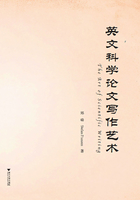
Introduction
The purpose of this book is to provide a road map for researchers who wish to improve their ability to convey their messages in the scientific literature. The success of publication in international scientific journals depends on the art of writing as much as the quality of the science. Therefore, the goal of the book The Art of Scientific Writing is to help scientists, scholars and students alike to formulate their scientific ideas in a manner that will maximize the impact of their research. Rigorous scientific training does not necessarily include training how to present scientific data in the best way. This book is based on the idea that there is an art as well as science that is required for the expression of scientific ideas. Of course, there is not a universal prescription for the writing of a scientific journal article, nor do we wish to generate a norm of expression. However, scientific writing does follow a well-defined structure that lends itself well to a logical and systematic approach. The typical journal article contains sections entitled: Introduction, Experiment (Materials and Methods), Results, Discussion and Conclusion. Of course, an article usually contains figures that show the results of experiments or calculations. The old saying that a“picture is worth 1,000 words”seems to be quite literally true in scientific journal articles, since it needs about 1,000 words to describe or explain a figure. Given the importance of figures in the representation of scientific data, it is worthwhile devoting a special discussion to make figures.
The three chapters of this book outline the structural, grammatical and stylistic aspects of the writing of a scientific journal article respectively. The organization of Chapter 1 follows a recommended order for the writing of a scientific journal article. Section 1.1 discusses the design and presentation of figures in a scientific publication. Then Section 1.2 and Section 1.3 talks about the Results and Experiment sections respectively. Section 1.4 gives a systematic approach to writing a discussion section. The method for conducting a literature search and organization of references is suggested. The organization of paragraphs and the logical flow of the argument are also elucidated. Section 1.5 presents the Conclusion section. Finally, Section 1.6 discusses the Introduction, because Introduction would be clear or by being written last. Section 1.7 describes how the abstract can be formulated once the scope of the article is clearly defined.
Only when an article has been completed will it be possible to provide an appropriate introduction. The Introduction frames the article and puts it in certain research context, and it is essential that the scope of the article be known. If the Introduction is written too early in the process, it may include aspects that are irrelevant, or miss indispensable elements. The Introduction should provide a brief introduction to the research background with limited words, instead of an overall literature review of the field. Similar reasoning applies to the abstract, which should be written last of all.
Chapter 2 describes language usage in scientific publications with a particular emphasis on how to avoid common errors made by non-native English speakers. The examples are based on years of experience in peer review of papers in the field of chemistry and represent a compilation of hundreds of common errors in writing observed over the years.
Finally, Chapter 3 is a brief guide to writing style. Any such guidance is subjective, but hopefully this section will be of benefit to all authors who strive to find an appropriate tone to convey their scientific messages.
In order to display what has been learned in a scientific study, one can begin with a good design and organization of the figures that represent the data. In other words, the most important aspect of writing a paper is to determine an appropriate way to illustrate the result so that it conveys a clear message. Like a long, sophisticated sentence, a paper can have a number of ideas, so that its core idea is overwhelmed. By arranging the figures in a logical fashion, one can see whether the scientific article tells a story. This is a useful exercise that requires visualizing the results and their significance in a way that is friendly even to an amateur reader. The second important aspect of preparation is to conduct a complete literature search that helps place the work in certain context of its field. When the writing addresses open issues in the field of research in a specific way, the paper will have greater impact.